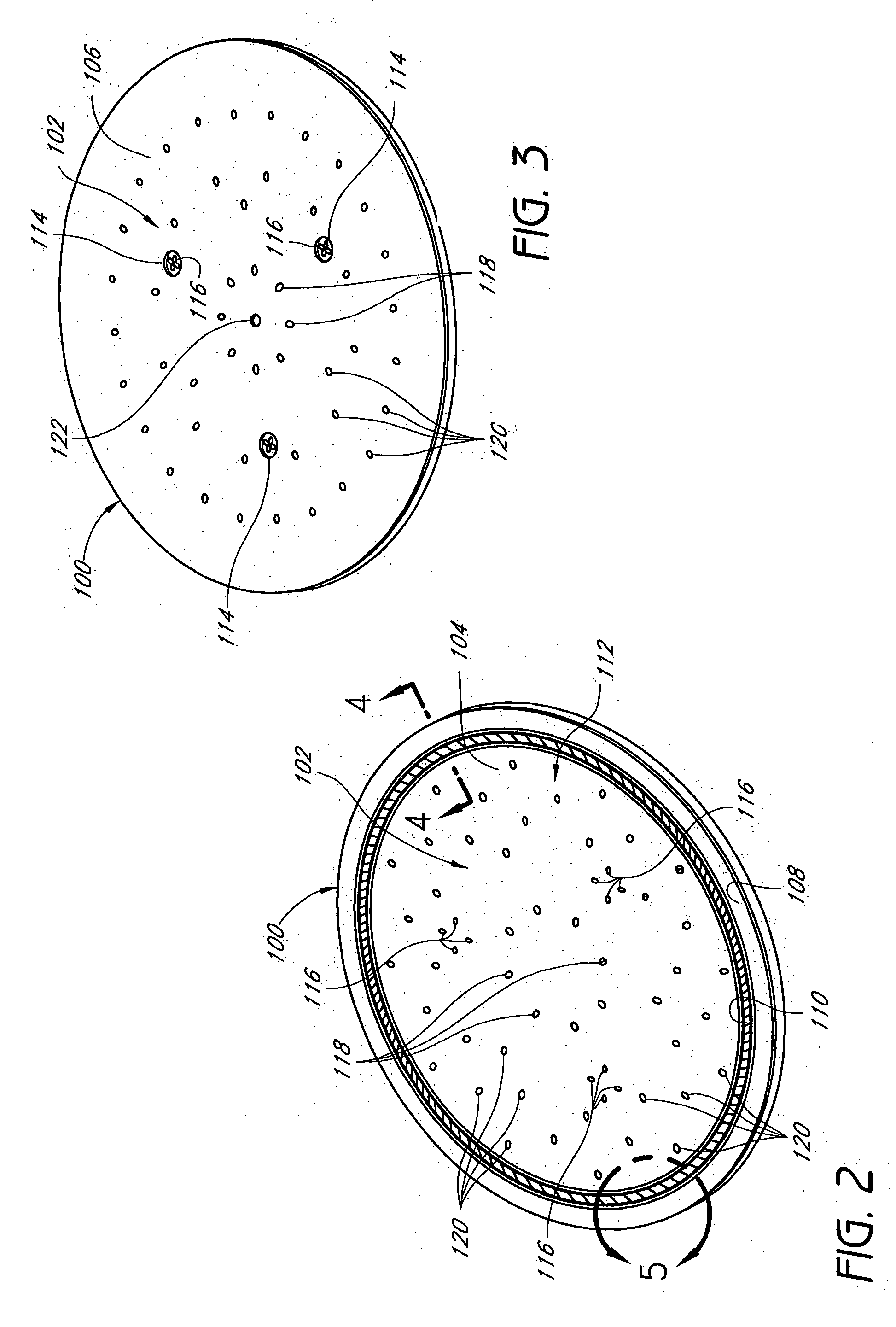Substrate support system for reduced autodoping and backside deposition
a technology of backside deposition and substrate support, which is applied in the direction of chemically reactive gases, coatings, crystal growth processes, etc., can solve the problems of direct impingement of relatively focused, limited conventional substrate support methods and systems, and high velocity flows of purge gas onto the substrate, etc., to facilitate gas flow, facilitate gas flow, facilitate the effect of gas flow
- Summary
- Abstract
- Description
- Claims
- Application Information
AI Technical Summary
Benefits of technology
Problems solved by technology
Method used
Image
Examples
Embodiment Construction
[0038] Prior to describing the substrate holder of the invention, an exemplary CVD reactor is disclosed. FIG. 1 illustrates an exemplary CVD reactor 10, including a quartz reaction chamber 12. Radiant heating elements 14 are supported outside the transparent chamber 12, to provide heat energy to the chamber 12 without appreciable absorption by the chamber walls. Although the preferred embodiments are described in the context of a “cold wall” CVD reactor, it will be understood that the substrate support systems described herein can be used in other types of reactors and semiconductor processing equipment. Skilled artisans will appreciate that the claimed invention is not limited to use within the particular reactor 10 disclosed herein. In particular, one of skill in the art can find application for the substrate support systems described herein for other semiconductor processing equipment, wherein a substrate is supported while being uniformly heated or cooled. Moreover, while illust...
PUM
| Property | Measurement | Unit |
|---|---|---|
| angle | aaaaa | aaaaa |
| diameter | aaaaa | aaaaa |
| diameter | aaaaa | aaaaa |
Abstract
Description
Claims
Application Information
 Login to View More
Login to View More - R&D
- Intellectual Property
- Life Sciences
- Materials
- Tech Scout
- Unparalleled Data Quality
- Higher Quality Content
- 60% Fewer Hallucinations
Browse by: Latest US Patents, China's latest patents, Technical Efficacy Thesaurus, Application Domain, Technology Topic, Popular Technical Reports.
© 2025 PatSnap. All rights reserved.Legal|Privacy policy|Modern Slavery Act Transparency Statement|Sitemap|About US| Contact US: help@patsnap.com



